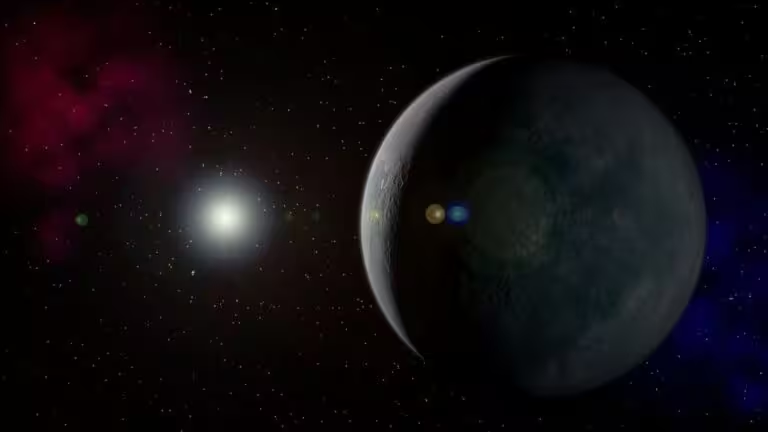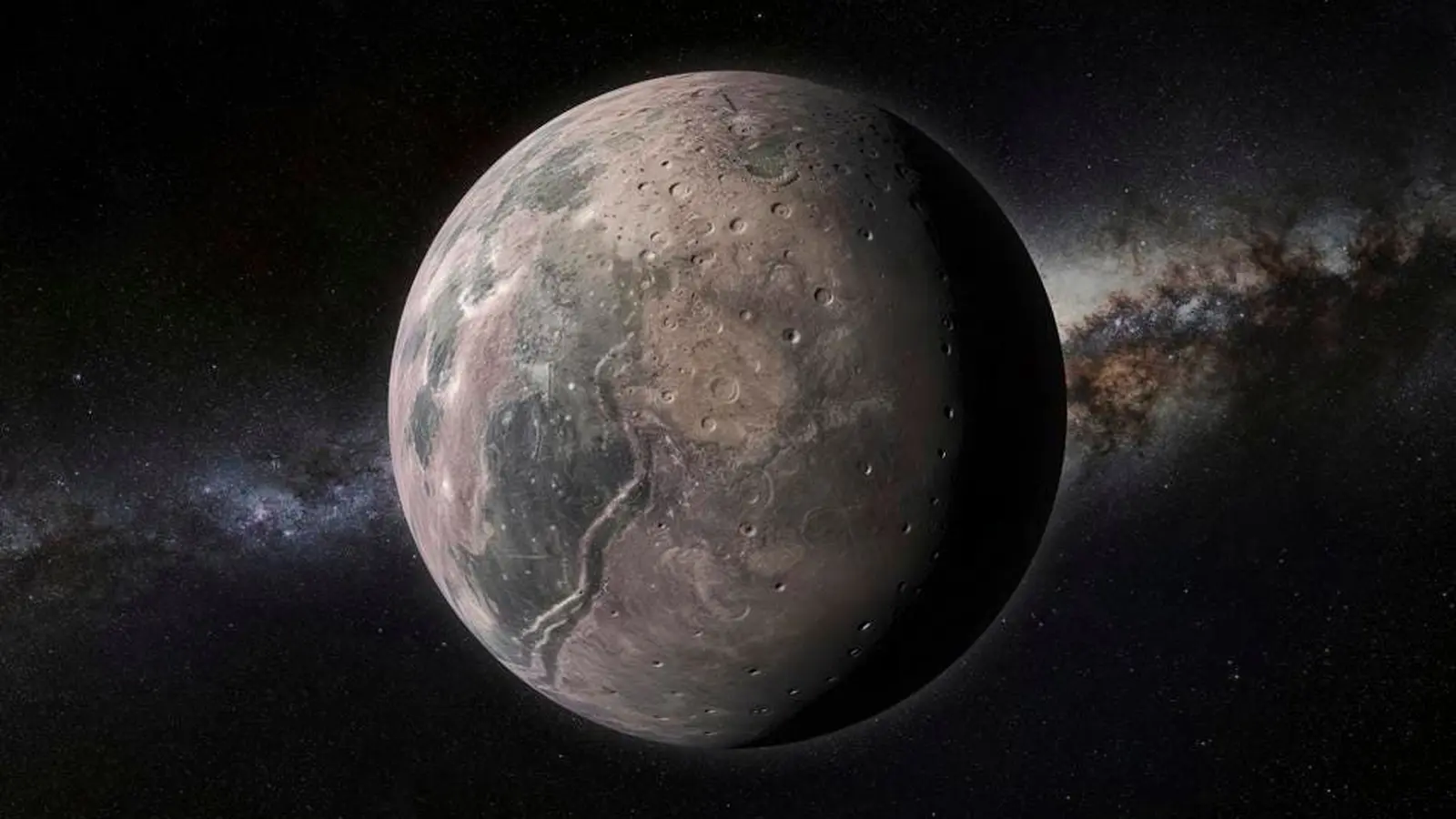6 Minutes
New measurements of the Kuiper Belt plane reveal an unexpected 15-degree tilt among objects orbiting well beyond Neptune. Researchers say the disturbance could be explained by an unseen, rocky world — smaller than Earth but larger than Mercury — orbiting in the deep outer Solar System. The finding offers a fresh lead in the long hunt for hidden planets beyond Pluto.
A 15-degree mystery in the Kuiper Belt
Astrophysicists from Princeton University measured the orbital plane of hundreds of trans-Neptunian objects and found a surprising warp. Objects between roughly 80 and 200 astronomical units (AU) from the Sun appear tilted by about 15 degrees relative to the Solar System's invariable plane, with a reported statistical confidence of 96–98 percent. Follow-up modeling suggests only a small (2–4 percent) chance that this tilt is a false positive.
The Kuiper Belt is a vast, flattened ring of icy bodies extending from about 30 to 50 AU, home to Pluto and thousands of smaller objects. Beyond the familiar edge of the classical Kuiper Belt lies a population of distant and so-called 'detached' objects whose orbits are not strongly controlled by Neptune. By analyzing orbital orientations across a broad range of distances — semimajor axes from 50 to 400 AU — researchers looked for departures from a single flat plane and found a distinct, localized warp centered between 80 and 200 AU.
How the team detected the warp — and why it's hard to see hidden worlds
Detecting faint objects in the outer Solar System is notoriously difficult. At those distances, Kuiper Belt objects reflect very little sunlight and are extremely cold, so thermal infrared emission is negligible. Rather than searching directly for a dim planet, the researchers used an indirect method: they recalculated the overall plane of the Kuiper Belt while explicitly correcting for observational biases that can skew survey data.

Princeton astrophysicists Amir Siraj, Christopher Chyba and Scott Tremaine applied their bias-corrected technique to a sample of 154 objects beyond Neptune. They reasoned that absent an external perturber, the orbital orientations in each distance range should lie close to a single flat plane. That pattern held for objects at 50–80 AU and for very distant bodies at 200–400 AU, but the 80–200 AU cohort exhibited the unexpected tilt.
Historical precedent underlines this approach: Neptune and Pluto were located in part by studying anomalous orbital behavior in the planets and minor bodies visible at the time. Using orbital dynamics as a signpost has been a time-honored strategy for discovering unseen Solar System members.
Simulations point to a small, tilted planet — dubbed "Planet Y"
To test possible causes, the team ran N-body simulations that model gravitational interactions over millions of years. The only configuration that reproduced the observed warp reasonably well involved a small planet — between the sizes of Mercury and Earth — orbiting between about 80 and 200 AU with a modest orbital inclination of order 10 degrees relative to the Solar System plane. The authors proposed the informal name "Planet Y" for this hypothetical world.
Such a planet would not be easy to detect optically. A rocky planet at those distances would be small and dark, reflecting very little sunlight. Without prior knowledge of where along its orbit it might be now, targeted searches are difficult. Still, the analysis provides a useful trail of breadcrumbs: a constrained distance range, a probable mass window (sub-Earth), and an inclination estimate that together can guide future surveys and instrument planning.
Implications for Planet Nine and outer Solar System science
The possible existence of Planet Y does not resolve the separate, long-standing hypothesis of a more massive "Planet Nine" residing beyond ~400 AU. Instead, this result suggests the outer Solar System could host multiple, smaller hidden worlds that subtly sculpt the architecture of distant minor bodies. If confirmed, Planet Y would reshape models of Solar System formation and migration, and influence how astronomers design future wide-field surveys and infrared instrumentation to probe the cold, dark outskirts of our system.
Beyond discovery, studying any such planet would help answer broader questions: how common are small planets at large radii, what role do they play in delivering objects to the inner system, and how do they inform constraints on the Solar System's early dynamical history?
Expert Insight
Dr. Elena Morales, an observational astronomer at the Space Telescope Science Institute (fictional), comments: "The Kuiper Belt is like a fossil record of the Solar System's past. When a segment of that record looks out of line, it's a strong clue that gravity has been at work in ways we don't fully understand. Finding a small perturber between 80 and 200 AU would be transformative: it’s within reach of current and upcoming surveys if observers know where to look."
Amir Siraj, one of the study's co-authors, summarized the significance succinctly: "One explanation is the presence of an unseen planet, probably smaller than the Earth and probably bigger than Mercury, orbiting in the deep outer Solar System." He emphasized that the paper does not claim a direct detection but identifies a robust puzzle for which a planet is a plausible explanation.
The new measurement and simulations are published in Monthly Notices of the Royal Astronomical Society Letters. As sky surveys grow deeper and computational models improve, astronomers have fresh parameters to target. Whether Planet Y reveals itself directly in the coming years or the tilt is traced to another mechanism, the discovery highlights the outer Solar System's potential as a laboratory for planetary dynamics and discovery.
Source: sciencealert
Comments
mechbyte
is this even solid? 96-98% sounds good but sample is tiny, selection effects could be sneaky. where's Planet Y hiding?
astroset
Wow, a 15° tilt? If Planet Y is real that's wild. Hope observers target 80-200 AU zones, but maybe biased data tho


Leave a Comment